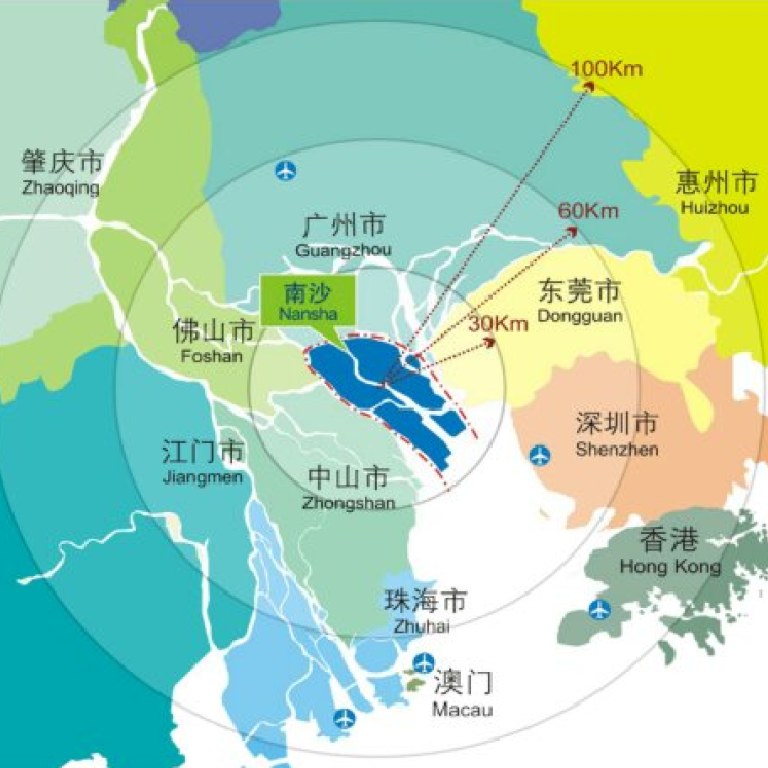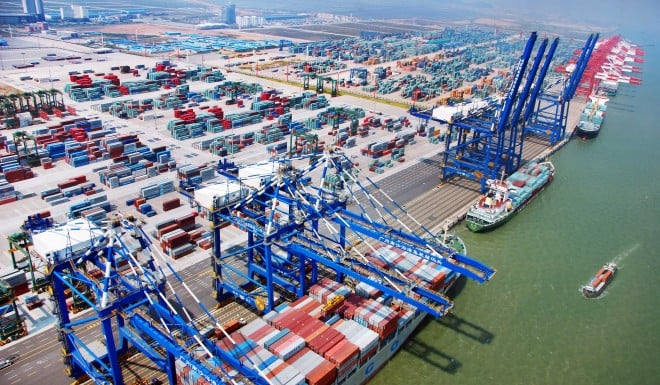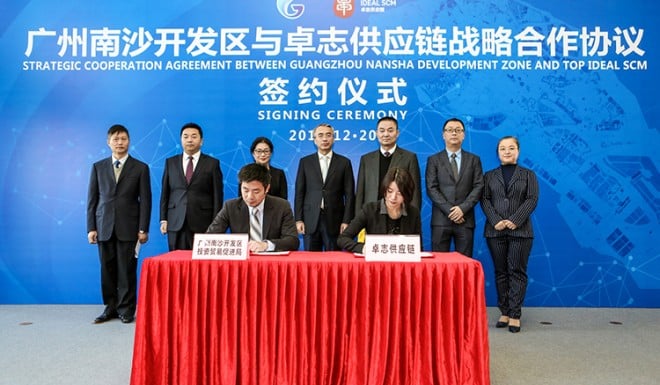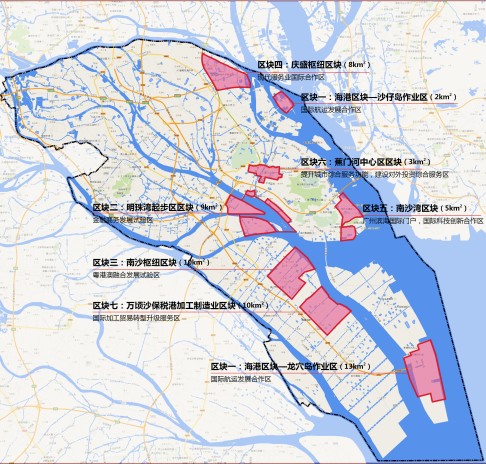
Nansha New Area, a successful nationwide template for free trade zones
[Sponsored Article]
Three years ago, China’s State Council gave green light to the country’s most developed areas, Guangdong, Shanghai, Tianjin and Fujian to set up free-trade zones FTZ in their jurisdictions, aiming at testing new regulatory approaches, public or economic policy programs as well as facilitating trade and business transactions.
The zones’ development is the milestone to further open up the country’s markets to global products, services and trades, according to national development plans.

Guangdong FTZ, covering 116 sq. km, would deepen cross-border cooperation with Hong Kong and Macau while moving the country up the global supply chain and innovation. It would also work with the two regions to align local foreign trade rules with international standards.
Shanghai’s zone eyes on major experiments in financial reform, commodities trading and logistics services; The Tianjin FTZ is expected to help drive integrated development in Beijing, Tianjin and Hebei; Fujian's zone focuses on cooperation with Taiwan to attract more foreign investment and help businesses in the province head offshore.
Located at the center of the Greater Bay Area, the Nansha New Area in Guangzhou, the biggest of the three pilot trade zones in Guangdong province, the country’s biggest economic power, is playing an essential role to boost innovation and technology and high-end services industry in the area, as well as deepening cooperation between Guangdong and Hong Kong and Macao to jointly develop logistics, tourism, financial-leasing and cross-border e-commerce industries in the years ahead.
With a sound industrial foundation, the Nansha FTZ is also Guangdong’s gateway in participating in the construction of the Belt and Road (B&R) Initiative, forging technology innovation, advanced manufacturing, international trades, shipping logistics and high-end marine manufacturing.

In June, Maersk Group and Top Ideal SCM, a leading Chinese company in the cross-border digital supply chain industry, jointly launched Damco, a global provider of freight forwarding and supply chain management services, first of its kind in China to provide one-stop supply chain services solutions for international and domestic customers in the GBA area and Belt and Road countries .
It takes only one day for a newly-registered enterprise to obtain its business license in Nansha as the zone introduces an international trade single-window service, with the highest custom clearance efficiency in China. In April, a pilot scheme is launched in Nansha that non-special use cosmetics will no longer require official pre-approval when they are first imported to the Nansha FTZ. Guangzhou Amway Trading Co., Ltd became the first company to enjoy the preferential treatment. which it only took eight days for Amway to complete all procedures and bring its new product to the mainland market.
As of October, the number of companies registered in the Nansha FTZ has risen to 74,432, boosting Nansha’s GDP to reach around 139.2 billion yuan in 2017 from 102.6 billion yuan in 2014. In the first ten months of this year, a total of 30,471 companies were newly registered in Nansha, where is only half an hour by high-speed train from Hong Kong, with registered capital of totally 761.9 billion yuan, nearly twice the same period in the previous year. Among them, more than 1,300 firms are foreign-invested, utilizing US$ 900 million of foreign investment.
Of these enterprises, some major names include GAC Toyota Motor Co Ltd, COSCO Shipping Bulk Co, Haier, Denso and dozens of investment projects by Fortune 500 companies.

The FTZ status given to Nansha meant that, supportive measures are gorgeous to make pilot financial reform and innovation in the Nansha FTZ: a one-off cash award of 20 million yuan will be given to those newly recognized the world’s top 500 enterprise or 10 million yuan to those recognized the world’s top 1,000 enterprise or China’s top 500 enterprise.

The Nansha FTZ, covering a total area of 60 sq meters, comprises seven functional sub-sections: Jiaomen River Central Cluster to develop business service industry and attract headquarters of SMEs; Pearl Bay Start-up Cluster to focus on the headquarters economy, financial service and business service; Nansha Bay Cluster (International Technological Innovation Cooperation Zone) to develop technology innovation, yacht economy and cultural creativity industry; Wanqingsha Bonded Port Manufacturing Cluster to develop processing trade, R&D and incubation, and e-commerce; Port Cluster (International Shipping Cooperation Zone) to develop shipping logistics, bonded warehousing, bulk commodity exchange, automotive logistics; Nansha Hub Cluster (Pilot Zone for Integration among Guangdong, Hong Kong and Macau) to focus on professional service and financial back-end service and information technology; Qingsheng Hub Cluster to develop tech innovation, education and international investment and financing.
